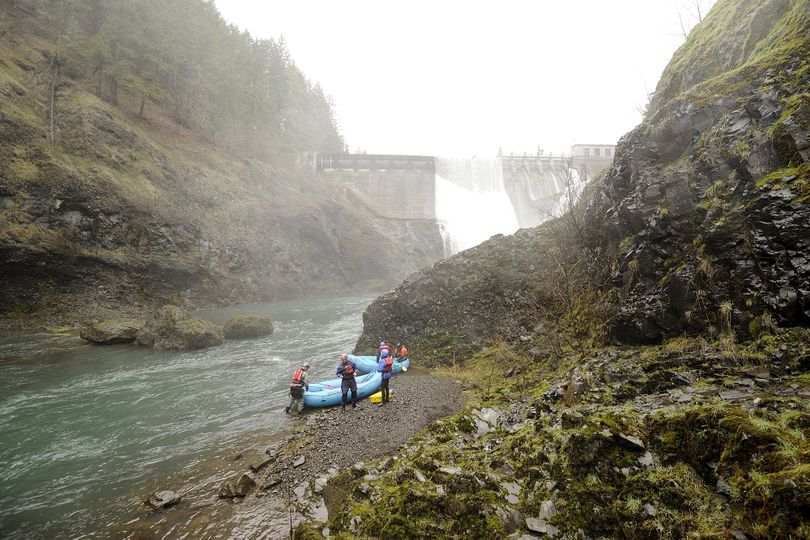Have a blast watching Condit Dam go down

FREE-FLOWING RIVERS – The demise of Condit Dam on Washington’s White Salmon River is available for all to see online in photos and video.
The demolition crew used explosives to blow out the bottom of the dam on Wednesday (Oct. 26) to let water gush out and drain the reservoir. About 2.4 million cubic yards of sediment that has been collecting below the dam, built in 1913, began surging down through the 13-foot-high by 18-foot-wide drain tunnel created in the dam’s 90-foot wide base during August and September.
The PacifiCorp website carried the blast live.
The White Salmon Time Lapse site has been capturing images and creating an album of progress, which will continue for months.
Standing 125 feet tall, Condit is the second largest dam to be removed in the United States after being contested for its barrier to fish passage. Biologist believe salmon and steelhead will take advantage of the new habitat they can reach upstream starting with next year's runs.
Only time will tell how the surge of water and sediment affects the salmon and steelhead fishing holes in the river and at the mouth. Some anglers already worry that the fishing at the confluence of the White Salmon with the Columbia may be impacted for a long time.
Workers will begin removing he dam structure in spring 2012.
